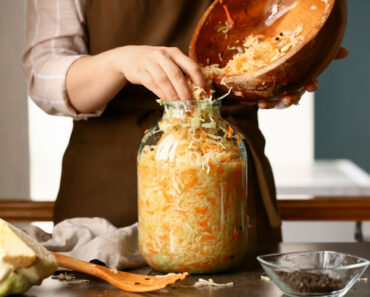This time of year always seems to catch me by surprise. For the last few months of the year, I’m focused on Christmas, busy with activities and making presents. Yes, I still make the most important presents, for the most important people in my life. But that doesn’t leave much time to think about spring coming, which I probably should be doing. Spring comes early where I live, it doesn’t wait for a leisurely arrival in March or April.
I’m not sure where you live, but I’m just about as far south as you can get in these US of A. Winter is mostly just a word here, with us only being allocated six days of cold per year. Surprisingly, two of those days this year actually turned into freezing temperatures at night… just barely. That might sound great to you, especially if you live in the far north; but it’s virtually impossible to grow anything in the middle of the summer. I usually end up having to replant for a fall harvest, after the heat kills everything. So, there’s pluses and minuses to anywhere you live.
But with spring fast upon me, I’m trying to get ready for my spring planting. I’ve started a bit, with some fruit trees and bushes in the ground already. But I need to expand my garden this year, adding a couple more beds. That means not only building the beds, but getting some soil, compost, and the other ingredients to make up some good potting soil for it. The race is on to see if I can get it done in time, along with all the other projects I’ve got going on.
Spring planting is such an important part of self-sufficiency that it needs to be a major point on our calendars. We should start by figuring out when we’ll be planting and then build the rest of our schedule from there, working both backwards and forwards, to schedule the rest of our gardening work.
If you think about it, that’s where our school year, with a summer vacation, came from. Back when the majority of our population was living on the farm, families needed the kids home during the summer, to help. School couldn’t start in the fall, until the harvest was in and had to end in the springtime, in time for planting. Since most of the population lived in the north, the school schedule was built around the single growing season that they have up there.
So, the first question we need to ask ourselves, is when we’ll be able to plant. That means, when is the earliest the weather will allow us to plant. For those living far enough north that your growing season is shortened, planting generally means planting for sprouting in the greenhouse, rather than planting directly in the ground. Once the last freeze is over, you can transfer the seedlings to your garden beds.
But before planting those seeds, you need to make sure that your greenhouse is ready. With most of us using homemade greenhouses, made of PVC pipe and plastic sheeting, there’s a good chance that the greenhouse will need some repairs before we use it. That means taking off the old plastic and putting on new, with making sure the frame isn’t damaged somewhere in-between.
Garden beds need to be inspected and possibly repaired as well. Most gardening sources recommend against using pressure-treated lumber for making garden beds, so the wood generally ends up becoming seriously damaged after a few years. Repairing those garden beds can be time-consuming, as you need to pile up the soil before taking them apart, then spread the soil back out, once they are repaired or rebuilt.
Earn Your Food Independence NOW
As you can see from this basic breakdown, there can be a lot to do, in order to get ready for spring planting; and that’s the point. If we’re going to get our planting done on time, we need to start preparing now… or, if not now, then well in advance of planting day. Here’s a list of things that you might have forgotten about; but had better get done now.
- Check your seed inventory and buy as needed
- Clear off cover crops or weeds that have grown in your garden beds
- Repair plating beds
- Build new garden beds for expansion; buy soil and move that soil into the beds, adding any additional ingredients you use in your garden soil
- Top your beds, if you didn’t do so in the fall
- Remove mulch that you placed on the beds for winter, setting it aside for after planting
- Restore the pathways between your planting beds, removing weeds, and applying more mulch
- Make repairs to greenhouse
- Check watering system and make any necessary repairs; buy parts for expansion (especially to drip irrigation systems)
- Buy garden chemicals and fertilizers
- Check worm population and repopulate, as necessary
- Trim trees that might prevent garden beds from getting good sunlight
- Prune trees, shrubs, and grape vines, if you haven’t already done so
- Check garden soil for invasive subterraneous pests, like grubs, and treat as necessary
- If your compost bins aren’t already in operation, get them ready for the year
- Make fish emulsion fertilizer
- Check your rainwater capture system and make necessary repairs
Mapping Out Your Garden
One of the important parts of gardening every year is mapping out your garden. This shouldn’t be the same every year, other than perennials, because different types of plants affect the soil differently. You want to rotate your crops, to ensure that you’re not depleting the soil. This also helps with preventing pests from destroying your garden.
Crop rotation consists of making sure that the same categories of plants are not planted in the same garden beds, every year. Ideally, they should only be in those beds one out of every three years. That will give the other types of plants an opportunity to replenish the soil, keeping it constantly ready and providing the maximum possible yield from your garden.
Depending on the crop rotation scheme you use, your plants will be divided into different groups, by type. We can break these down into six basic groupings:
- Alliums: onions of all types, leeks, shallots, garlic
- Legumes: beans of all types, including green beans, peas, peanuts, soybeans. These will add nitrogen to the soil
- Brassicas – broccoli, cauliflower, cabbage, kale, radishes, mustard greens. These need nitrogen-rich soil, so should follow the legumes in the cycle
- Nightshades – eggplant, tomatoes, peppers, potatoes. All of these require rich soil, as they pull a lot of nutrients out to grow their fruit
- Umbellifers – carrots, parsley, dill, parsnips, fennel
- Cucurbits – zucchini, pumpkins, squash of all kinds, melon, and gourds. Like the nightshades, these need rich soil
We can do a crop rotation by following this list, moving around the garden clockwise, with each of the categories taking their place in the beds, in turn. This keeps the brassicas, for example, following the legumes all the time, so that they have the nitrogen they need.
A simpler breakdown allows for a four garden bed rotation.
- Legumes – beans of all kinds
- Root vegetables – onions, carrots, beets, radishes
- Fruit vegetables – tomatoes, peppers, cucumbers and squash
- Leaf vegetables – lettuce, herbs, cabbage, spinach
In addition to this basic rotation, it’s important to think through how the sunlight will get to the plants’ leaves. Always plant so that the larger plants are to the north and the shorter ones are to the south, within the planting bed. That will prevent any from being shaded, allowing them all to get plenty of sunlight. This is especially important for root and fruit vegetables, which need full sun.
Another important thing to think about, when planning the year’s gardening, is access. You will need to get to the various plants you have growing in your garden, as well as weeding in-between them. Avoid placing plants in a way that precludes you getting to other plants. For this year, I’ve decided to take both cantaloupe and watermelon out of my garden area and plant them elsewhere, so that they don’t get in my way. Last year, I had them trailing down the aisleways between my garden beds, which made it difficult to move any sort of cart or wagon through my garden. I don’t want to take up space in my beds with the vines and I don’t want to take up space in the aisleways, so I’m moving them elsewhere.
Irrigation
The final thing I do, before planting, is making sure that I don’t need to modify my irrigation. I haven’t yet moved over to drip irrigation, but I am still using soaker hoses. Most of these are buried in such a way as to water the entire beds. But I often need to make minor modifications to my system, in order to ensure that everything is watered evenly.
I’m a big believer in automated irrigation, putting my soaker hoses on a timer. That saves me the biggest time-waster in my garden, while protecting my plants from any momentary forgetfulness. I hate to think of the plants I’ve lost through the years, before going to automatic timers, just because I was out of town for a few days.



























